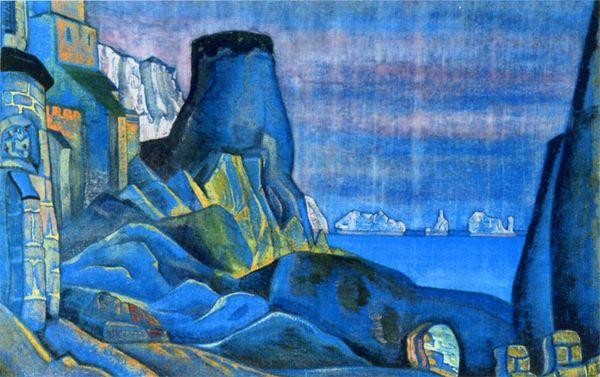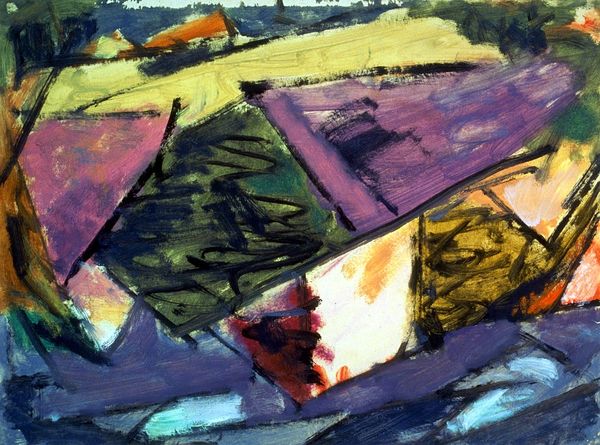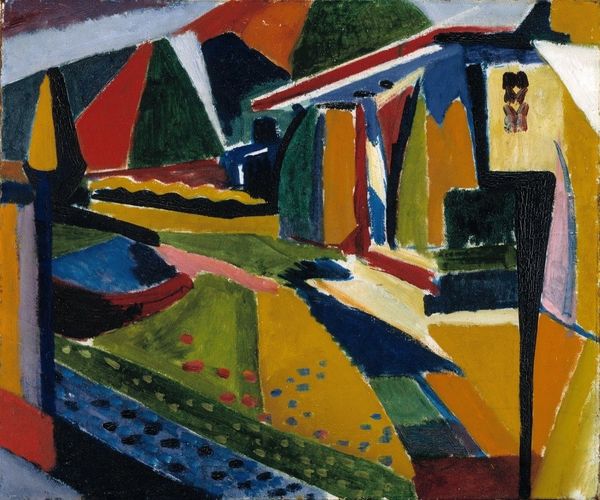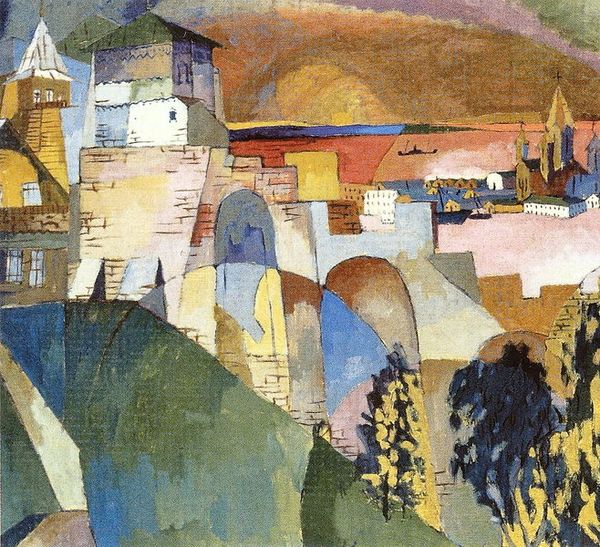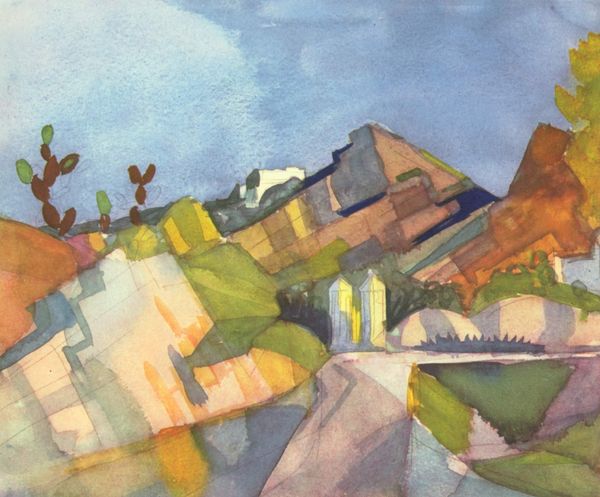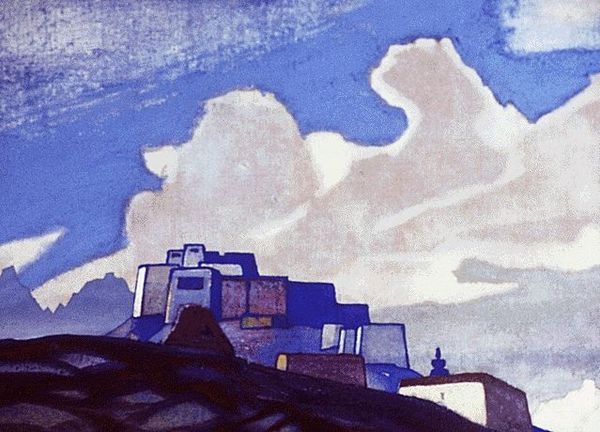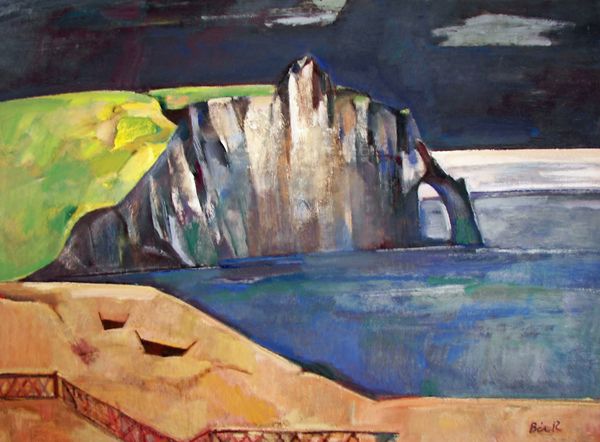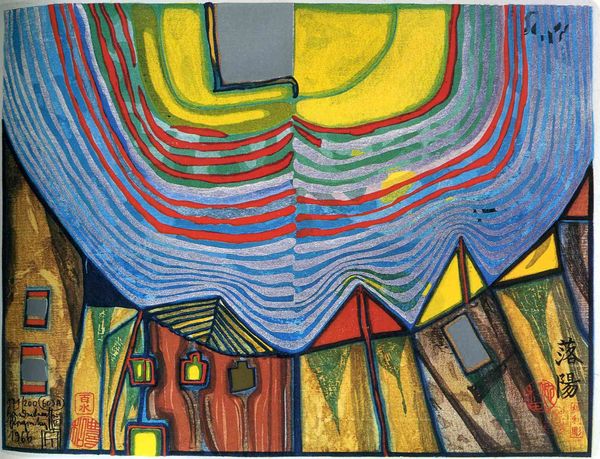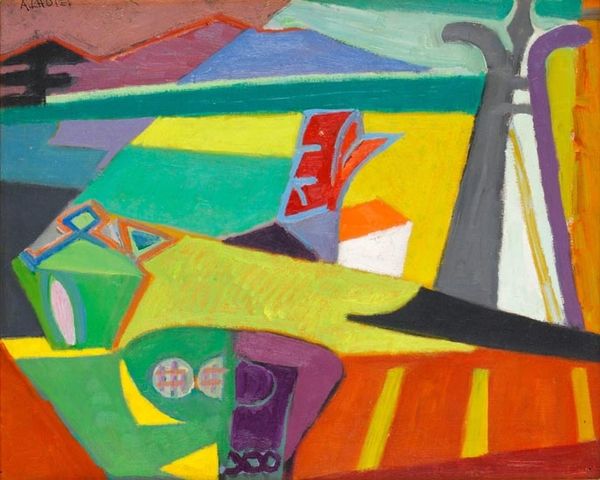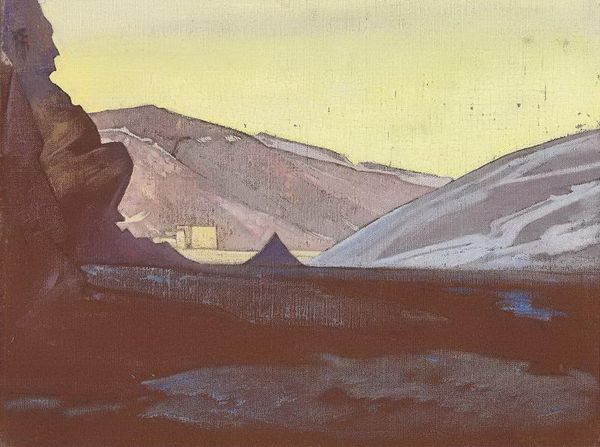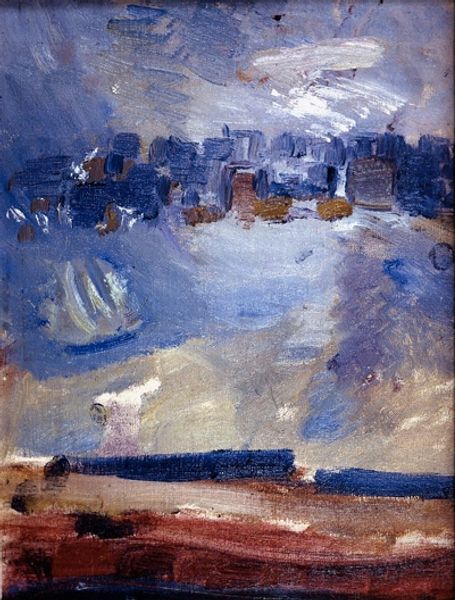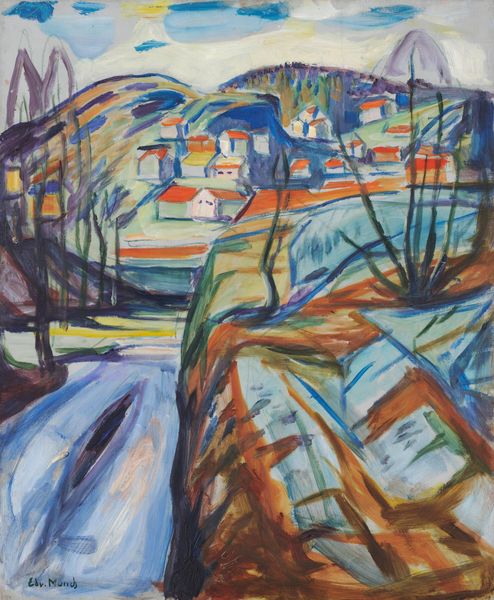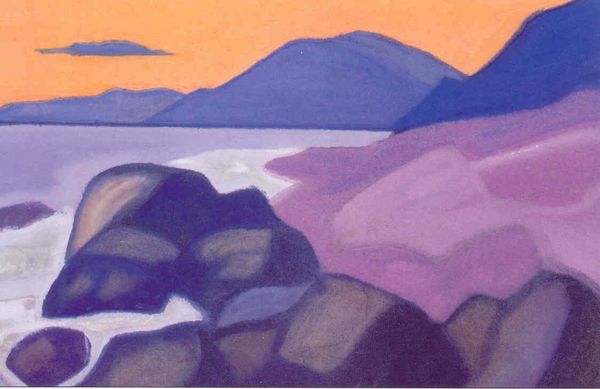
painting, oil-paint
#
painting
#
oil-paint
#
landscape
#
oil painting
#
mountain
#
orientalism
#
symbolism
#
modernism
Copyright: Public domain
Editor: Here we have Nicholas Roerich's "Linnasaari, Ladoga lake" from 1918, rendered in oil paint. The strong color palette gives the whole piece an otherworldly feel. What do you see in this work? Curator: What strikes me is how the paint application emphasizes a tangible world-building. Look at the thick layering of the oil, building up the forms of the landmass. This isn't just a representation of a landscape, but an actual construction of one using material means. Editor: So you’re focusing on the materiality itself as key to its meaning? Curator: Precisely. The rough, almost primitive rendering clashes with the refined oil technique, highlighting a tension between nature and its artistic rendering. This suggests a commentary on the industrial impact of the period, where labor and landscape are deeply intertwined and in flux. Notice how the sharp shapes indicate the influence of manufacturing and extraction upon the geography? Editor: That makes sense. The colors too - a sort of muddy palette set against this bright artificial-seeming sky… Curator: Absolutely. And what about Roerich's personal beliefs influencing his choices of the medium? Was he maybe aiming to ground the spiritual in the earthly, showing the potential impact humans could have upon it? Editor: That's an interesting thought. I hadn’t considered how his philosophy would literally materialize within the piece. Thanks, it's given me a new perspective on Roerich's intentions! Curator: It shows us that artistic practice isn’t separate from the economic or social landscape in which it was created. These are things we often overlook.
Comments
No comments
Be the first to comment and join the conversation on the ultimate creative platform.
